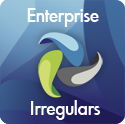There was a ton of consolidation in the HRM software and services market during 2010, and 2011 is off to a roaring start with SumTotal’s acquisition of GeoLearning. There’s a lot more to come, and speculation is already rampant about:
- which LMS vendor SuccessFactors and/or Peopleclick Authoria may acquire? and what about Kenexa is this regard?
- whether/when/how Salesforce.com will expand into the HRM market more directly and on a grander scale than via their own lab efforts and a range of small fry building HRM-related applications on the Force.com platform?
- what further acquisitions the private equity firms already in our space may make (and it’s too long a list to print here) as well as which PE firms may yet enter our markets?
- where ADP might go next, e.g. to create less dependence on their GlobalView partnership with SAP via acquisition of a more complete/less expensive/functionally broader global HRM platform and/or to acquire more in-country players to serve emerging markets with owned capabilities rather than via partners? and this same question, about acquiring in-country players, should be asked about NorthgateArinso and others?
- whether Lawson, perhaps with pressure from substantial investor Carl Icahn, will be on Infor’s or someone else’s shopping list or improve their stock price via a bold sell-off of lower performing assets coupled with an equally bold foray into true SaaS via a further acquisition in our space?
- when (and if?) Cornerstone OnDemand will IPO given their much smaller size than some of their bulkier, publicly traded talent management competitors versus becoming an acquisition target for a private equity firm or established HCM player wanting Cornerstone’s multi-tenant SaaS architecture?
- how much runway do some of the smaller workforce management vendors have given a new burst of energy from Kronos around its user experience, mobile capabilities, and global expansion — and when might Kronos itself beconsidering further acquisitions of its own and/or an IPO to provide a liquidity event for their private equity owners?
- and speaking of private equity owners liking their liquidity events, what’s the most likely scenario for Ceridian’s owners to achieving their return of capital? and what about those folks at Vista Equity Partners who own SumTotal et al? or General Atlantic over at TriNet? or KKR and Northgate Arinso? (Boy, that list of HRM software/services companies that are PE-owned is impressive!)
- what about those interesting smaller players like Rypple, Sonar6 and similar getting acquired for the energy and modern technology that they bring? there are some very interesting small, niche players in our space that have also been talent magnets, but one wonders how much scale they can build with their mostly quite narrow products in a market that favors bulking up?
- which PEOs will be the mega-aggregators in this uniquely American business model, not to mention the global roll-up underway in indigenous payroll service bureaus where small fry around the world simply can’t keep up with the technology investments this business now demands? the same could be asked about 3rd party benefits administration players in the US, which is also ripe for further roll-ups by the big guns: and, my personal favorite,
- who will be left standing among the formerly independent talent management single process automators, from consolidation across the background checking firms to those offering the classic ATS and right on through performance management and org charting/management?
But this post isn’t about all the possible M&A/IPO/etc. events that may occur in 2011 and beyond. It’s about the fairy tales that surround such liquidity events from the perspective of their impact on customers and what not to believe. With examples I’m making up and which don’t represent any specific HRM software companies, living or dead, here’s my view of the fairy tales that are launched with the press releases surrounding these deals along with their true meanings:
- We (the acquirer) will continue to support all product lines fully — Almost no acquirer ever says, in their first press release, that all investments in major architectural overhauls will now stop for one or more of the combined product lines, but that’s exactly what does happen. No vendor can afford to advance equally a series of wildly different product architectures. What they can do, and what the most sincere and capable actually do, is continue to add features/functions within the framework of each product’s existing architecture and object model, while they figure out how to converge them, choosing one of the product lines as having the winning future state architecture and object model (the desired outcome when the deal was done) or realizing that they must create a new architecture and object model onto which to build the full range of covered functionality in order to create their future state product line. Where historical data isn’t important, where configurations (gasp! or customizations) are limited, and where other elements of implementation complexity are modest, migrating to a new, converged platform need not be life-threatening, but it’s certainly not a non-event. But in most cases where the software in question provided broad HRM functionality, there’s a fair amount of time and effort (translate: cost) to the customer for that migration even if the vendor doesn’t add to that cost. I could name names here, but there’s no need as most of my readers know of whom I speak.
- We (the acquirer) are delighted with our new colleagues and expect to retain all of them — Almost no acquirer is ever able to retain all the best talent that comes with the acquired vendor. Some of the leadership wanted to cash out or just wanted out, either of which could have been the impetus for the deal. Or that leadership has been sufficiently unsuccessful that the acquiring company’s leadership isn’t likely to want to perpetuate the source of those business/personal failings. Great software people quickly notice if their products aren’t going to be the next generation platform for the consolidated company, and they pick up their marbles and leave. And there are many more good reasons, for staff of both the acquiring or acquired company, to decide it’s time for a change, to include being immediately courted by other firms which assume that may be the case. IPOs can produce the same effect, with some folks taking their money, after years of forced death march schedules, and just kicking back for a while. But whatever the myriad reasons for staff changes, to include the natural effects of consolidation in eliminating duplicate roles, count on these events to cause a fair amount of churn in the new organization’s design and staffing. Does that matter to customers? Have you ever been forced to change hairdressers or barbers and dreaded that first haircut? Even when the new haircut is noticeably better than you’d ever had before, we creatures of habit and inertia rarely switch hairdressers unless the old one about cut off an ear. How else would you explain the many companies still running my Snowdons of Yesteryear (and clinging to the next generation of Snowdons) under cover of darkness?
- Our customers can expect to see only improvements in their support, product roadmaps, and overall happiness as a result of this event– this may well be true if you were the customer of a dying vendor which has been picked up by a thriving one once you and they are over the hump of needed changes, which can include your migration to a different software platform, agreement on a different contract/SLA/etc., working with a new support team, and more. And it could also be true if your vendor has been acquired for an amazing set of assets that they just hadn’t exploited well but which will now be given the love and support they need to blossom by a new owner who is more passionate about HRM and whatever your acquired vendor’s product does than they are about getting the costs out quickly. fBut HRM #EnSw vendors rarely become acquisition targets unless they’ve got a problem — aging architecture, lack of market momentum, exhausted or inadequate leadership, lack of profitability, inability to scale product/sales/support/etc., lack of capital to challenge market leaders, etc. — unless the acquirer is trying to take out a major threat competitor. But even then, that threat competitor might well have been able to fight off the acquirer if they were gunning on all cylinders. So even under the best of circumstances, all customers of the combined companies need to keep a careful eye on what’s happening there and invest more than they had been in their vendor relationship governance as well as competitive landscape assessment levels of effort while the combined companies sort out their organizational design and staffing changes, separate and/or converged product roadmaps, product architecture convergence or refresh, rationalization of contracts across all customers, etc. There’s no rest for the weary here as change, even change for the better, always brings extra work.
Change is change, and it’s never without extra effort on everyone’s part even when it’s change for the good. When we went from S/V Mar-Lin Nights to M/V SmartyPants, a change for which we had long prepared and one anticipated with great enthusiasm, it was nevertheless daunting to take the controls of our new trawler for the first time. So when ownership/leadership changes happen suddenly, and without your advice and consent, to the vendor of one or more of the HRM delivery system platform components upon which you rely, it’s little wonder that you feel some whiplash. And it shouldn’t surprise anyone that the “new”company’s leadership puts out soothing messages all around. But despite the best intentions of everyone concerned, prepare for the possibility of some disruption when you hear that your vendor has just been acquired. If you’re faced with a rocky ride, you’ll at least be prepared. And if you’re pleasantly surprised, shout that acquirer’s praises to the heavens or via a comment right here.
With many thanks to the publishers of Golden Books for their book cover used here and to lyricists Carolyn Leigh and Johnny Richards for the song “Young at Heart” popularized by Frank Sinatra.







[…] Bloom. And Naomi likes to keep it interesting and varied adding another blog to the carnival on HR Vendor Consolidation Fairytales. I so need to pick up a copy for Ryleigh’s bedtime […]
[…] What got Naomi and I talking was the whether a certain software vendor was doing anything to reduce the debt level they possess. Much of this vendor’s technical debt is the result of their acquisitions of many other software companies, each with their own technical architectures, code base and upgrade challenges. (Naomi’s got a couple of good blogs on the technical debt issue at here and here.) […]
[…] Bloom. And Naomi likes to keep it interesting and varied adding another blog to the carnival on HR Vendor Consolidation Fairytales. I so need to pick up a copy for Ryleigh’s bedtime […]
[…] strategy of Vista/of private equity in all of this, and many of the other business details of this further consolidation in our industry. My immediate interest is what this does or doesn’t do for the customers of all […]
[…] is Carnac showing here, and now? Well, there have been and will be many more blog post predictions (including my own recent post about likely vendor consolidations) about what’s going to happen in 2011 in human resource […]
[…] a dying product, replacing it with their much more survivable one? Whatever the case, there’s disruption ahead, even if the outcome is a very good one. And knowing that your vendor/provider is likely to be […]
[…] now? Well, there have been and will be many more blog post predictions (including my own recent post about likely vendor consolidations) about what’s going to happen in 2011 in human resource […]
[…] last entry in our Company Growth section comes from Naomi Bloom at In Full Bloom. She writes about HRM #EnSW Vendor Consolidation Fairy Tales. I didn’t even realize that was a category of fairy tales. And I must admit I didn’t […]
[…] (Cross-posted @ In Full Bloom) […]
Naomi,
A thoughtful and detailed look at the reality of the HCM market. One addition, is that HR leaders need to have a solid plan – business plan/technology plan – that takes into account the changes to vendor landscape. This should, be a part of an overall technology strategy, that is closely aligned to the business strategy.
The pace of change will NOT slow down, and the potential for business disruption is greater than zero. HR can earn a lot of corporate credibility (aka, chips) by developing a plan/strategy that can flex and react.
Having a solid plan is like having a “smooth suspension” for that rocky ride.
Thanks so much for adding your thoughts to this conversation. A pro pos of every HR leader needing a strategic HRM delivery systems plan are several posts I did on this topic, which you can find here: http://infullbloom.us/?cat=34
[…] This post was mentioned on Twitter by Jevon, Naomi Bloom, Nina Kalmeyer, Stephen Lynn, Martin Perry and others. Martin Perry said: Interesting post! Particularly your comments re: ADP & NGA…Vendor Consolidation Fairy Tales http://bit.ly/hzoGfA HRM #EnSW […]
Thanks for the straight dope Naomi. Your perspective stands in stark contrast to the cheerleading of thought-leaders, analysts, and other HRM life forms that perpetuate these fairy tales every time the landscape shifts.
Andrew, Thanks so much for your encouragement. No one has more respect for the vendor community than I do, for the heavy lifting involved in bringing HRM software/services to market, delighting customers, and making money doing this. And I do my best to help those vendors by educating their customers and prospects to do their part of the work needed to make effective use of those software/services. But there really are times when I want to scream when reading press releases, and this post was inspired by quite a few that have arrived lately — and not just the obvious ones.
Great post Naomi. If I could add some addition fairy tales:
1. We will have out-of-the-box integration soon.
The fact is integrating products is extremely hard…at least any meaningful integration. Integration requires UX integration, workflow integration, programming interface integration, etc. Surface integration (matching the user interface) is nice but ultimately meaningless if integrated process lacks.
2. We have complimentary architecture.
Having a similar code architecture (ie. Java, .NET, etc.) is good but architectures have many layers. At the presentation layer their is Flex, Flash, HTML5, Java, CSS, Ajax, etc. Conversely, at the database layer, if the vendor is not multi-tenant they are likely to be supporting multiple databases as demanded by clients. Net…net their are still many complexities and potential failure points.
3. This acquisition now gives us the deepest features and we are the only vendor with a complete solution.
Features and functions are meaningless unless it works together. All levels of the architecture (UX, workflow, data) must work seamlessly together and the only really way to do that with an acquisition is through re-architecture not integration. The easiest sniff test is to have the vendor showcase scenarios tailored to your business across multiple processes (performance, development, succession, reporting, etc.)
Lastly, knowing the ownership structure of your vendor, in today’s market, is extremely important. I am all for capitalism and vendors maximizing their shareholder return but not to the detriment of customers investment.
Jason, many thanks for these additions. I think I’m going to have to write a lot more about complimentary architectures, because this is one of the biggest fairy tale topics around. Many thanks for that inspiration.
Interesting post. My two cents:
Acquisitions are the commercial face of the technology consolidation that is bound to happen in any market. The future is likely to look like a handful of pure play cloud platforms/software with an ecosystem of point solution leveraging their distribution and technical infrastructure.
The point of interest however is that the Cloud drives a much faster standardization of technologies (less legacy to drag). The path to this future may therefore be much shorter than what most customers/vendors have experienced in the previous cycles (client/server, ERP…).
Add to this price points being driven down and free / Open SaaS models appearing and we have the recipe for a very interesting few years ahead.
Can’t wait!
There’s truly no rest for the weary in keeping up with our industry, but it’s certainly more stimulating — and worthwhile — than what so many expect of us Boomers who live in Florida, also known as G-d’s waiting room.